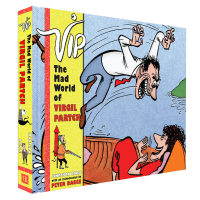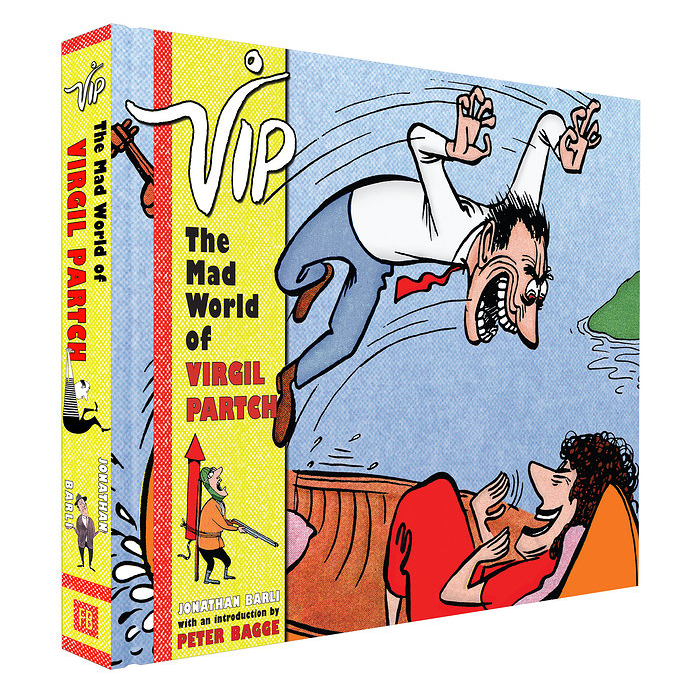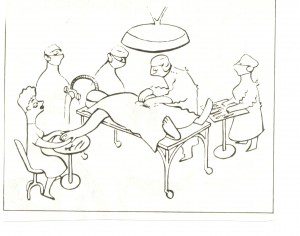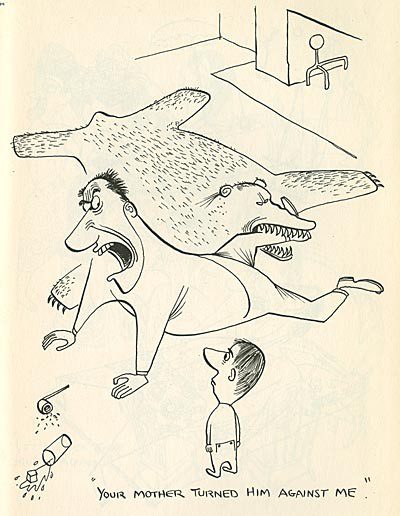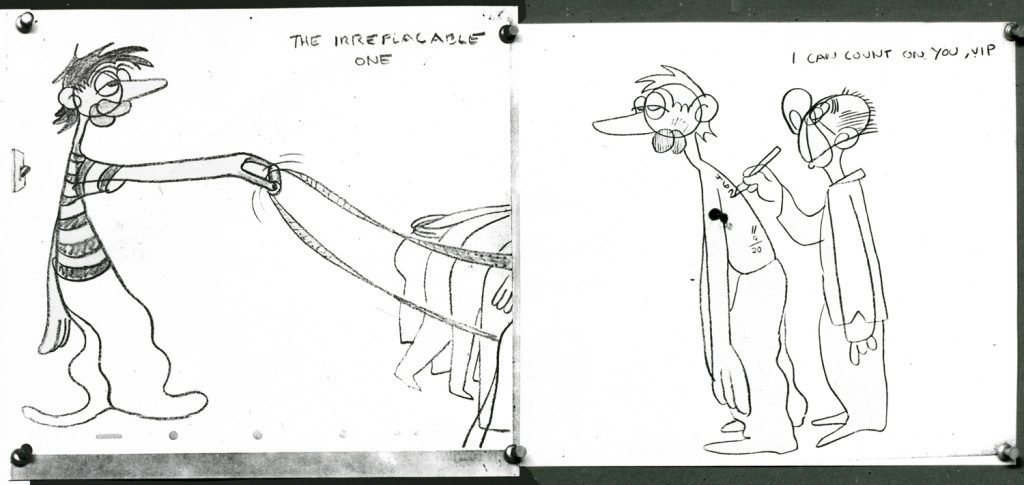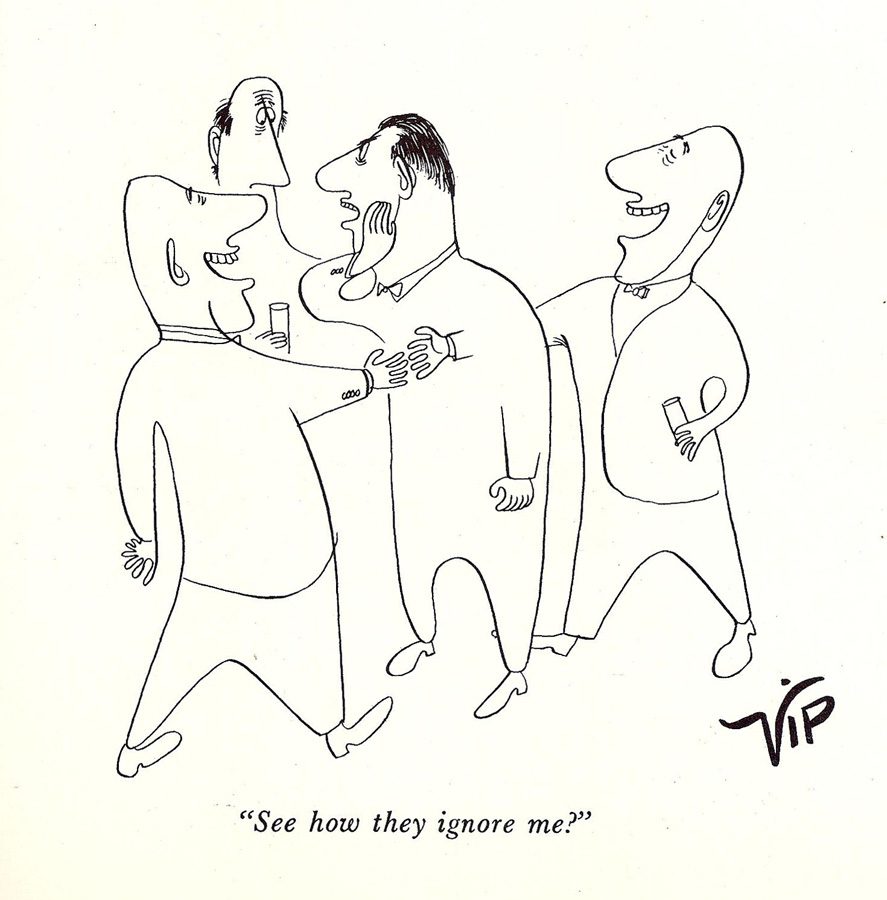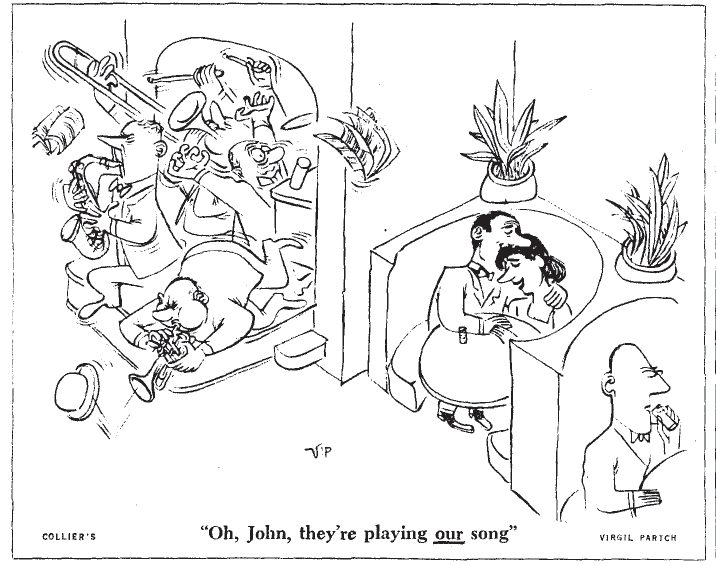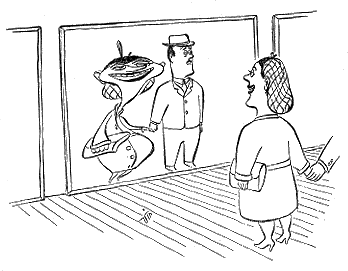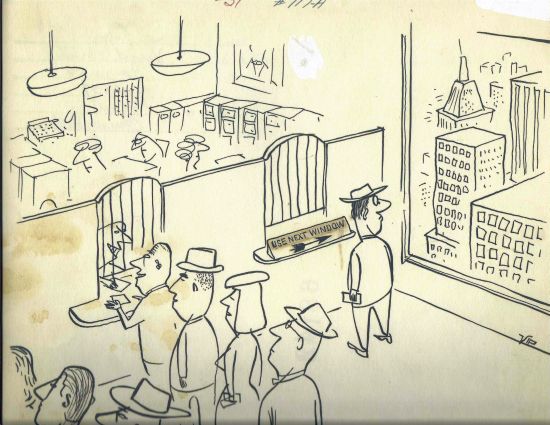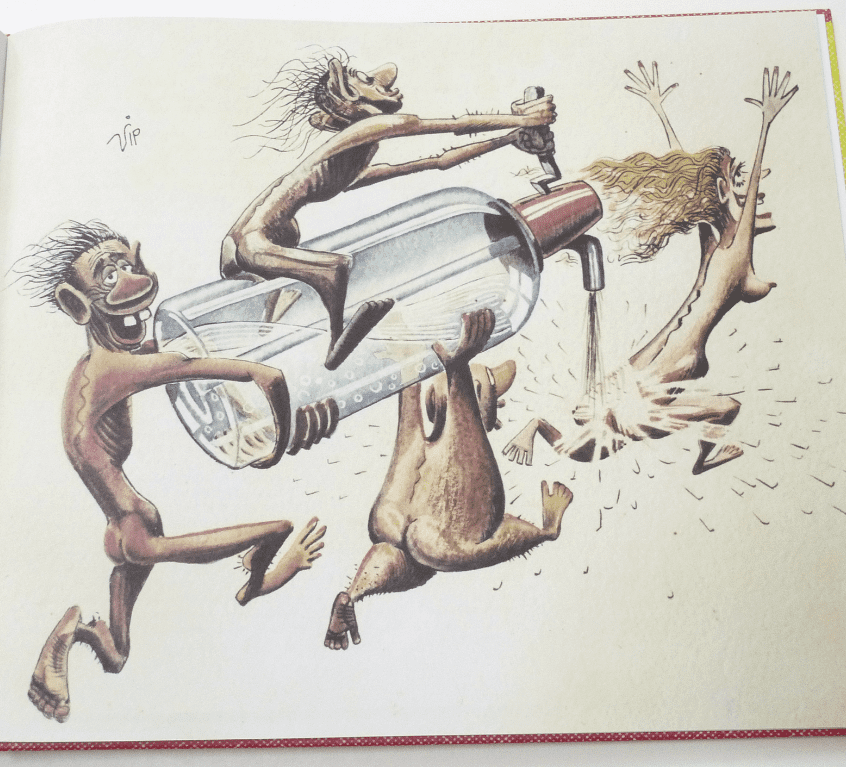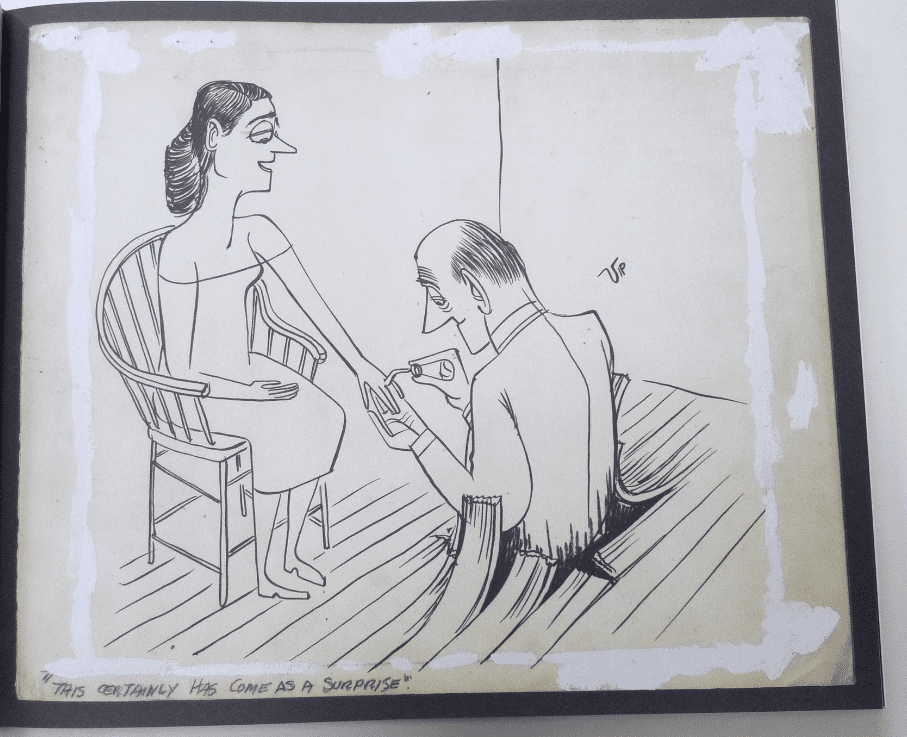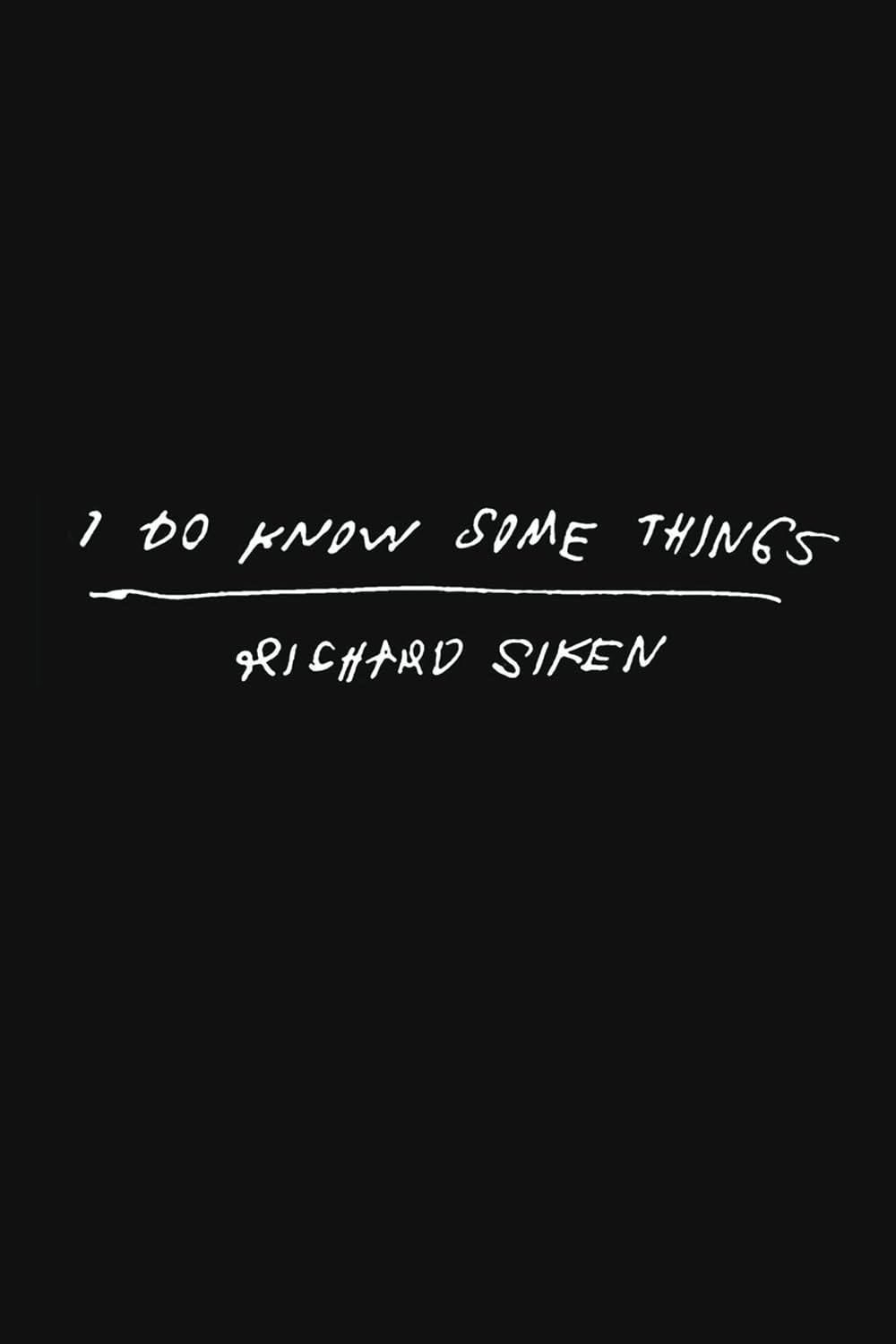The New York Comics & Picture-Story Symposium is a weekly forum for discussing the tradition and future of text/image work. Open to the public, it meets Tuesday nights from 7 to 9 PM EST in New York City. Presentations vary weekly and include everything from historical topics and technical demonstrations to creators presenting their work. Check out upcoming meetings here.
Designer, writer, and filmmaker Jonathan Barli spoke about the life and work of absurdist and visionary gag cartoonist Virgil Partch, the subject of his new book, VIP: The Mad Life of Virgil Partch (Fantagraphics). A designer who has worked for Fantagraphics, The Theodore Roosevelt Association, and Branscome International (among others), Barli is also the cofounder and art director of Rosebud Archives, which is dedicated to preserving and promoting “the cultural heritage of the cartoon and graphic arts.”* Barli is also a digital restorer of cartoons and comics strips who specializes in the work of lost cartoonists.
Hilarious, subtly subversive, and unique for his time, Virgil Partch was a 20th-century gag cartoonist whose “pleasingly grotesque style” still delights people today: Barli’s lecture was punctuated by bursts of laughter at each new Partch strip on the overhead screen. Barli sketched out the shape of Partch’s life, tracing the paths Partch took to becoming a gag cartoonist and examining the forces that shaped his humor and technique.
Barli highlighted the qualities that made Partch unusual among his contemporaries: his expressive linework and pared-down environments, the self-contained worlds within each cartoon, the way Partch subverted expectations in an image, and the lack of “winking at the audience” seen in other strips. Partch’s comics show a surrealism and sophistication that sometimes outstripped his readers’ comprehension, as evidenced by an exasperated letter to the editor asking him to explain one of the cartoons. Barli underscored how revolutionary Partch’s work was by showing contemporary New Yorker and Collier’s comics with dry, winking, relatively tame jokes.
Born on a small island in the Pacific Ocean to a seriously artistic-minded family and a father in the American Navy, Partch was a product of his upbringing. Being skinny and cross-eyed as a boy and moving constantly with his family meant Partch got picked on in school. Humor became a way to win over others. Growing up with family members so well-versed in the art history, painting, and music exposed him to what would remain his primary artistic influence: fine art. He was also no stranger to death and pain, as he helped care for his consumptive mother. He developed a strong sense of humor and a streak of rebelliousness that came through in candid photos of him and in his cartoons. After an early stint at art school, Partch ran out of money and managed to find a job as an office boy at Disney, where he finished his education in the classes Disney offered all of its employees. As a “traffic boy” running errands for the staff, Partch was exposed to each part of the animation process. He began a lifelong habit of drawing constantly. He made many gag cartoons about the people who worked in the office and he worked alongside the animators (who included other future cartoonists like Walt Kelly and Hank Ketcham). Eventually, he worked his way up to assistant animator.
One of the people he met while working at Disney was gag cartoonist Dick Shaw, who both jumpstarted Partch’s cartooning career and was the subject of scores of x-rated cartoon parodies by Partch and other cartoonists. Shaw sent Partch’s work to The New Yorker, which published it. They also paid Partch a considerable fee, something that caught Partch’s attention. Thus enticed, Partch submitted more comics to publications, although The New Yorker eventually deemed him too gross for its pages. His comics were published in PM, True Magazine, Collier’s, Look, Saturday Evening Post, Liberty, and This Week. Following a strike at Disney, Partch was fired and began freelance cartooning full time. His career was interrupted by the draft in 1943, but Partch survived WWII by working for The Fort Ord Panorama.
Partch continuously experimented with his drawing technique; he switched between using a nib and a brush throughout his career and played with raising and lowering the amount of detail used in each cartoon. Sometimes, he would combine more detailed and less-detailed drawings in the same image. Eventually, he settled on a primitive way of drawing that worked well with his humor. Barli pointed out way Partch created expressive cartoons by making his linework more specific and less specific in different places. By 1950, Partch’s drawing acquired what Barli calls “a sense of the poetic.”
One trademark of Partch’s cartoons is how self-contained they are. Each cartoon has its own world of logic that the characters respond to. Several times, Barli brought our attention to the expressions of figures as they reacted to the gag. In one, a surgeon with an intense look on his face reaches for a tool … to cut a paper doll chain. The combination of something sobering (major surgery) with something whimsical (paper doll chain) is only one part of the joke. The absurdity of the situation is another. Finally, the way the surgeon reacts to this absurd situation is key. Comparing this version with one where Barli rendered the surgeon’s face neutral, one can see how much the man’s serious expression added to the joke. In another cartoon, a group of people make taffy while one character explains to another that the man behind them really hates taffy. The man behind them is standing on a chair with a taffy noose around his neck and has, unlike the other figures, an intensely pissed-off and determined look. The intensity in the man’s eyes makes the gag work.
Q&A
A question about Partch working with a nib and a brush. Did he use specific tools for specific markets?
No, he varied his technique across the board. He played around with different styles and techniques throughout his career.
What was the difference between his editorial work and his work for humor books?
His freelance work for newspapers and magazines incorporated editorial feedback and took into account the tastes of his readership. When working for books, he was less constrained.
Were his originals preserved?
Partch and his wife died in a car accident in 1984. In the 1970s, Partch had given his originals to UC Irvine, where you can see them today.
Another Barli-edited book of Partch art is coming out this year from Fantagraphics Books: Cork High and Bottle Deep, a collection of Partch’s alcohol-related cartoons.
*Rosebudarchives.com
***
Image 1: Virgil Partch, Ed. by Jonathan Barli, VIP: The Mad World of Virgil Partch, Fantagraphics, 2013.
Images 2-9: Virgil Partch
Images 10-11: Virgil Partch, Ed. by Jonathan Barli, VIP: The Mad World of Virgil Partch, Fantagraphics, 2013.
***
Andrea Tsurumi is a NY-based illustrator and cartoonist who likes her robots sad and her history funny. She is the recipient of a 2013 MOCCA Award and was included in the 2013 Best American Comics notables list. You can see her work here and her latest projects here.
